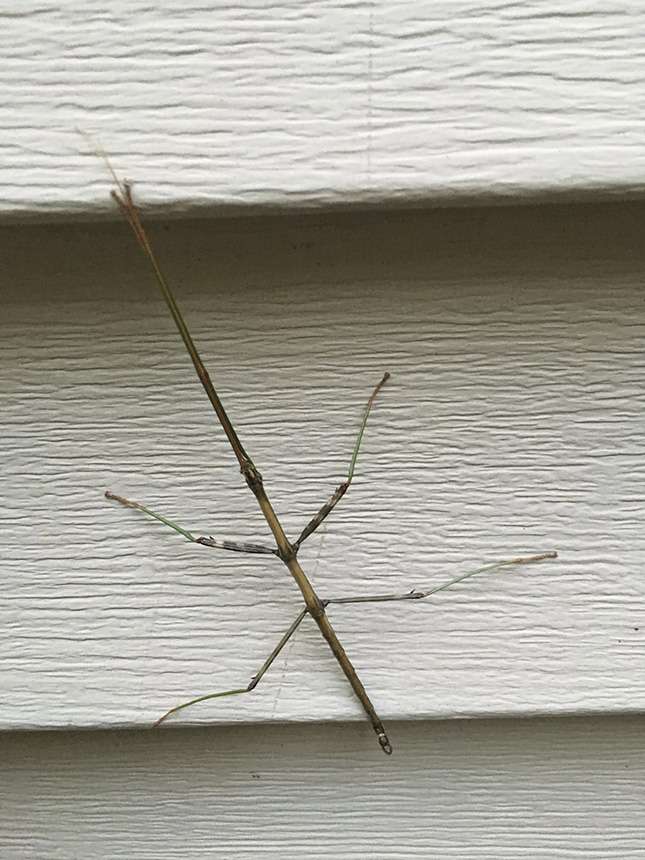There are more than 3,000 species of walkingsticks worldwide, 29 species in North America north of Mexico, and probably just 2 species in Minnesota. Northern walkingstick (Diapheromera femorata) is the most common walkingstick in North America and in Minnesota. The extremely long, thin, almost cylindrical body strongly resembles a leafless twig making it invisible to predators.
In Minnesota, the northern walkingstick population fluctuates on a two-year cycle. The odd numbered years are the “boom” years, the even numbered years the “bust” years. They mate in late summer. The female drops eggs to the ground one at a time. During heavy infestations, female egg-dropping can sound like falling rain. The eggs remain on the ground until the second following spring. After almost two years, they hatch between mid-June late July. During the night, the nymph crawls up the first vertical object it encounters. If that is a stem of a shrub or tree, it begins feeding. Otherwise, it returns to the ground and seeks another vertical object.
The other walkingstick known to be found in Minnesota, prairie walkingstick (Diapheromera velii), is very similar in appearance. Northern walkingstick is distinguished by its occurrence in forested habitats, the dilated and banded femur on the middle leg of the male, and the much shorter sensory appendages at the end of the abdomen of the female.
http://www.minnesotaseasons.com/Insects/northern_walkingstick.html

